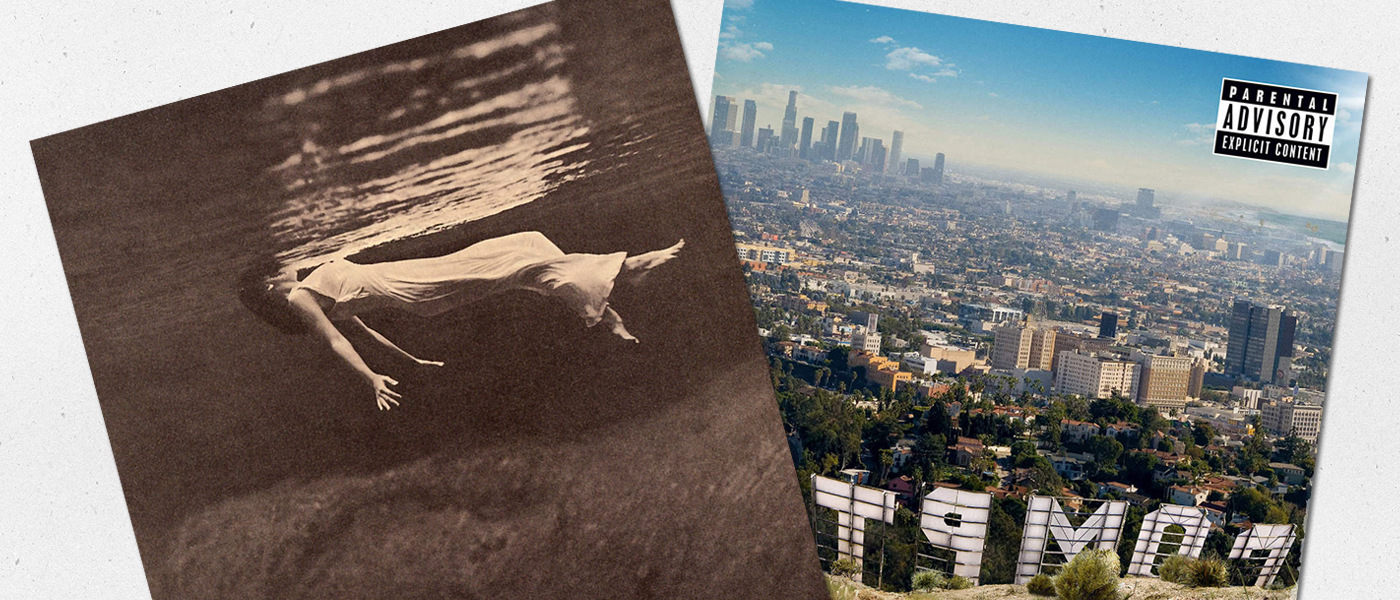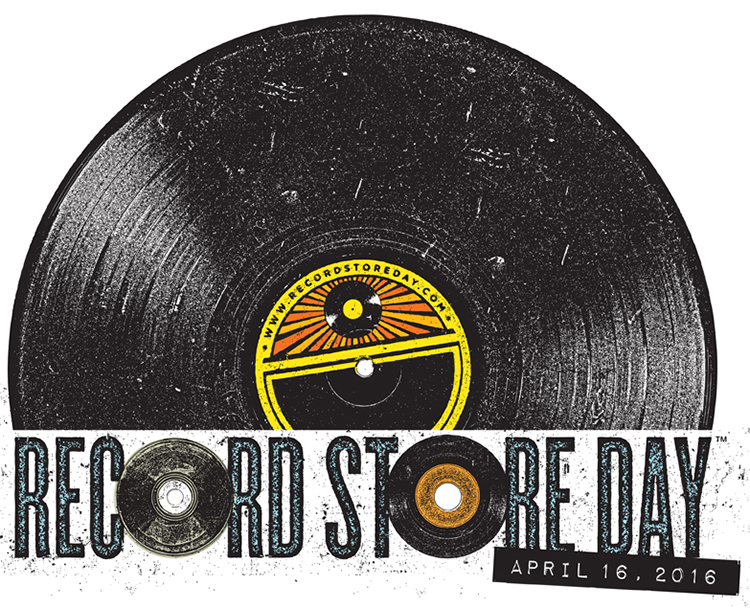
Enough so that I got in line at Amoeba on Haight at 6am sharp. There were only three lunatics in front of me and they were comprised of two parties. We sat out there for five hours until the doors opened, and we reconvened with all of our purchases and RSD swag ten minutes later. It was a banner day for music lovers and making friends.

I typically enjoy beefing up my 10-inch collection at this time of year, and 2016 was fine for that. Kinda. If I’d known going in what I know now, I’d have grabbed Outkast’s glow-in-the-dark 10-inch “Elevators,” but I opted for the self-titled New Barbarians disc instead. It was billed as being pressed on blood red vinyl. It was not. There are no liners or information beyond the song titles, the recording are piss poor, and the performances are worse. This is a first taste of an extended release planned for later this year. Skip it. They made 3,000 of these which are 3,000 too many.

Still in the 10-inch arena, Coltrane’s The Roulette Sides makes up for the New Barbarians debacle and more. Presented in glorious mono, these four tunes were recorded on September 8, 1960 with McCoy Tyner on piano, and the release was mastered from the original tapes. This is Accessible Coltrane, not Entering A Black Hole Backwards With Your Underwear on Your Head Coltrane. The pressing is pristine, the cover is glossy and strong, and 4,500 were pressed.

Disney had a couple of releases on the list and I grabbed the 10-inch Silly Symphony Collection: The Skeleton Dance/Three Little Pigs rather than the full-length offering. These are the soundtracks to a couple of short cartoons from 1929 and 1933, and there’s plenty of historical info and context included. The recordings were already old when I was a kid, and they sound their age, but I love this sort of thing. The Three Little Pigs side has vocals, but the Skeleton Dance is orchestral with no singing. The cover looks a little cheap, but the liners and music are cool. They made 2,500 and they’re selling for nutty prices on Ebay right this very second. No download codes included with any of the records listed above.
On to the 7-inch section…

In keeping with the really old soundtrack theme, I went for the Nosferatu score on silver wax by Music on Vinyl. I don’t trust the company, typically, but I wasn’t concerned about whether or not the original tapes were used for this one. I saw the film with live orchestral accompaniment a few years back, and this is a fun reminder of that afternoon. The cover art is super cool, the music is super spooky, the set is housed in protective PVC outer, and I got number 2,521 out of 3,000.
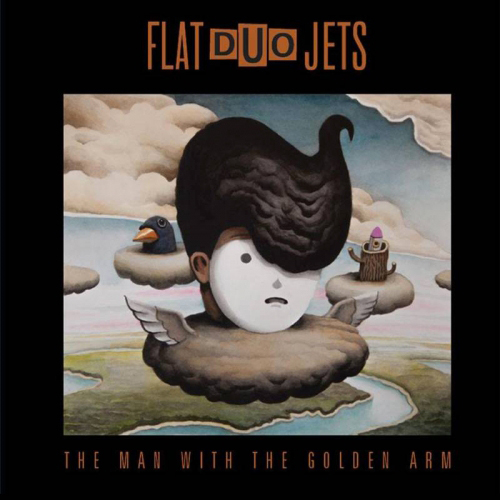
And the crown jewel of my RSD 2016 shopping bag may be the Flat Duo Jets’ double 7-inch set housed in a gatefold cover. “Pink Gardenia” was supposed to be on pink vinyl and “The Man with the Golden Arm on gold, but they got it reversed and mislabeled which I think is great. They only made 1,000, and I am excited to have overpaid ($20) for mine. At least it came with a download.
Secrets Sponsor
It’s worth noting that none of these records suffered from the quality control issues that have plagued RSD for a while now. The staff at Amoeba were all friendly, and I didn’t see anyone get trampled. If every RSD were this grand, I’d wish every day was Record Store Day.
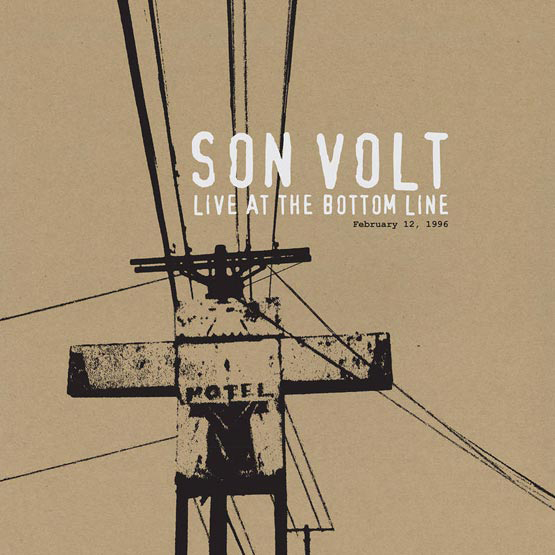
We took a look at Son Volt’s 20th anniversary reissue of Trace a few short months ago. I was lamenting the fact that there was a deluxe version of the reissue that included an entire live show that was only available digitally. If anyone cares to know, I am not so secretly of the opinion that the vinyl presentation should always be the deluxe version. Little did I know that our friends at Warner Bros. had another cash grab on their dockets. To that end, they issued the live portion of the deluxe reissue as a separate release for RSD. Maybe the demos that were part of the deluxe package will make their way onto vinyl for the Black Friday installment of RSD in November, but somehow I doubt it. I might purchase those individually on iTunes if the previews say they’re worth it. Regardless, despite my kvetching, I’m really excited to have this live document from Son Volt’s brief heyday.
Secrets Sponsor
This set was recorded on February 12, 1996 at the Bottom Line in Greenwich Village which seated 400 and closed in 2004. In ‘96, my college buddies and I were traveling all over the southeastern US taking in as much live music as we could handle, some of us recording the shows for posterity, when the artists allowed, onto digital audio tape. But if anyone got any of the Son Volt shows we caught onto tape, I’m unaware of it. Or I’ve forgotten. One way or the other, this is the first time I’ve heard this iteration of this band live in decades. And it’s better than I remember. I always enjoyed seeing Son Volt’s original lineup, but Jay Farrar seemed a bit detached at times, and the majesty of the Trace material never translated to live performance as seamlessly as I’d have hoped. The lazy guitar lick in “Drown” always sounded rushed, the vocals strained. But that’s not the case on this recording. These performances are smoking, and they bring back a gazillion, appropriately hazy memories from a time of great discovery and exploration in my life. The recording itself is more than serviceable. The electric guitars are a little muddy in spots, but that’s likely a function of the way they sounded onstage. The band’s tone always leaned a little closer to “fuzzy” than “distorted.” The acoustic instruments, however, achieve adequate separation and can be heard in clear detail atop the thundering drums and crowd noise. At the time of this recording, I thought Son Volt was destined for historic greatness. But they never really developed much in the way of dynamics, and they never explored much new territory that I was aware of. And they never followed through on the promise of Trace until way later in the game. Until no one but the diehards were paying attention, basically. I still catch them when I can, and I feel like they’ve had a bit of resurgence over the previous decade, but I’ve not heard anything from them that did for me what the material on this set does. On Chant and Strum comes close and its well worth your time if you can still find a copy.
These two discs are well pressed and quiet. The outer sleeve has a flat cardboard feel and appearance with a (stamped) handwritten set list on the back cover. No download code, but at least you won’t have to replace the liners. They made 3,500 of these. I’d have bought one for everyone I knew in 1996 if I could. Outstanding.
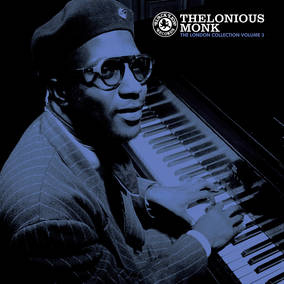
I was pretty excited to see a Thelonious Monk title on this year’s RSD list, especially since it was an ORG Music release. Bernie Grundman used the original master tapes, of course, and The London Collection Volume 3 was pressed on vinyl for the first time ever on this very special occasion. Problem is, I didn’t realize that I already had a bunch of material from the same recording date on something in Blue. Even had some of the same songs. A little research on my part would have helped, but I have no regrets. Except that the bulk of my Thelonious Monk collection is of a homogenous nature and mostly from his last recording date as a band leader.
But there’s not a ton of band material on this one either. Much of it is solo work, and it’s a “warts and all” kind of party. There are a couple of noticeable flubs. Either that or he’s doing some really weird stuff in the name of Jazz. Stranger things have happened. I’m a sucker for piano music, and I’m slowly amassing a pretty compelling collection of it, mostly with the help of Duke Ellington, Nat King Cole, and Monk. But I’m ready to go deeper with Monk’s material. The Mosaic title that I have of the Carnegie Hall recording with Coltrane is amazing. And I enjoy the two titles I have that were recorded on November 15, 1971 in London. Still, I can’t help but feel like I’m missing something. The London session was recorded right before Monk disappeared from performing in a haze of mental illness or brain damage, depending on whose theories you trust. I’d read that the guy was never that easy to get along with, but I’m to understand that things got especially dark during the last decade of his life. There is plenty to like on London Volume 3, but the performances aren’t especially fiery despite, or perhaps because of, what was happening in Monk’s mind at the time. “The Man I Love” is a zesty, fun take on the Gershwin classic, but much of the other material feels cerebral and brooding. The liners acknowledge some phrases that Monk borrows from Gershwin’s “Rhapsody in Blue,” and I’m proud to report that I picked them out before reading the notes. I hear the “tributes” in multiple songs on the first side, but the liners only mention one. That brings a little levity to the situation, as does the band. It’s hard to be too somber with Art Blakey on the skins, I reckon, but I’m still left wondering if there’s something I’m missing in Monk’s World. I’m going to take steps to get to the bottom of that mystery next month. I’ve ordered a classic Monk title that is reputedly sublime. This’ll afford opportunities for some compare and contrast action. I’m looking forward to it.
In the meantime, I’ve got a pretty compelling, if not entirely representative, little collection of Thelonious Monk titles building up on my shelves. They only made 2,600 of the Volume 3 record, and I can see myself bestowing my copy upon some avid Monk collector in the distant future and really making her or his day. Until then, I’m gonna keep digging and learning. I feel like I haven’t quite hit bedrock yet. Maybe next month…
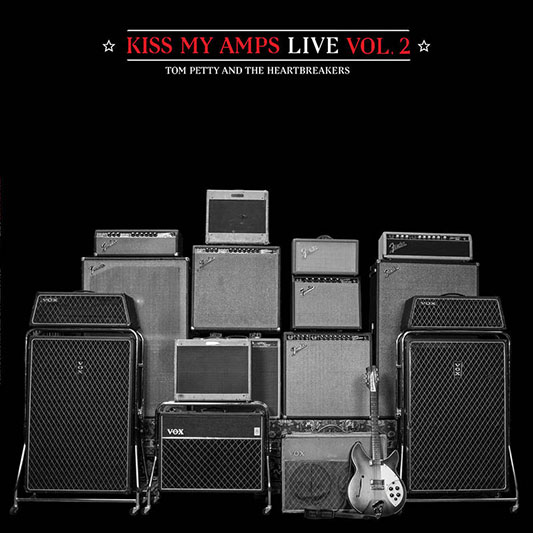
It’s hard to imagine that it’s been five years since Tom Petty and the Heartbreakers released Kiss My Amps as part of RSD 2011. Or that they waited so long for a follow-up release. Volume Two made it onto this year’s list, and I knew right away that it was coming home with me. I’m a sucker for a complete set, and the quality of the first volume would have dictated that I grab the second installment even if I weren’t. It sounds great. I still feel like there were some missed opportunities to tie the two releases together into a more cohesive whole. I’m like Muddy Waters in at least one respect: I Can’t Be Satisfied.
Volume Two is pressed pretty flawlessly and the recording is better than average in comparison to most major players’ live releases. It helps that these weren’t arena performances. The bulk of the songs were recorded at the Fonda (Los Angeles) and Beacon (New York City) Theaters. This valium-y version of “Rebels” was recorded outside at Bonnaroo, and I’ve always enjoyed live recordings from those types of events, actually. When done correctly, you get a really open sound with lots of detail and a pronounced lack of the “arena echo” that can be so sonically challenging in a home listening environment. And, of course, it helps that the Heartbreakers are quietly one of the most devastating Rock ’n’ Roll bands in history. That came through loud and clear for me when I saw them play at San Francisco’s Outside Lands Festival a few years back. Mike Campbell seemed more like Jimmy Page than himself on that day, and his playing hasn’t diminished in the interim according to what I’m hearing on the second Amps installment. The set list includes some choice covers (“So You Want to Be a Rock ’n’ Roll Star” and “Willin’”) as well as Petty originals that span his career. And the Traveling Wilburys’ “Tweeter and the Monkey Man” which is my favorite from that band’s catalog. Petty’s version is a more muscle-bound take on a tune whose only fault was that it was originally recorded in the late ’80’s. Put it all together, and you’ve got yourself a compelling little live document that doesn’t rely on big-name hits to get over. Petty’s done it his way from the jump and it’s taken him along some pretty high roads. I probably wouldn’t be too inclined to start mixing up my formula at this point either.
Here’s my thing: the first volume was numbered, came with a download code, and was contained within its own plastic outer sleeve. Volume Two has none of that. The lack of an individually stamped number is especially confusing to me. Why would you do it once and then not follow through? The lack of a digital version is less vexing, but still mysterious. There is no CD version of this release so it’s not like they’d have lost any money by including a download even if that was the way it worked in the real world. Other than that, they nailed it. The artwork matches up, even on the spine, so that the two installments look perfectly coordinated on the shelf next to each other. 7,500 were pressed so you should still be able to find a copy without having to work too hard for it. I’d say it’s worth it. For Petty fans, it’s a no-brainer.
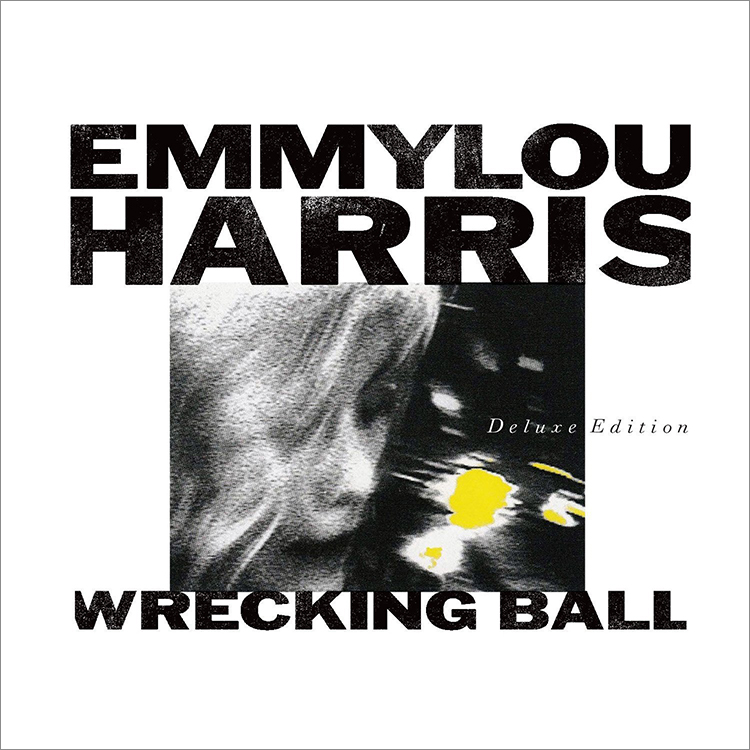
Nonesuch Records is my most trusted label for new, original releases. That’s mostly on the strength of what they’ve done with Wilco’s catalog, but they’ve also been at it for a while now, and they just seem to know what folks want from a vinyl release. They released Emmylou’s Wrecking Ball on vinyl for the first time ever as part of RSD 2016. I’d been saving that one for a while. Never heard the first note of it, but I knew it was supposed to be something special. This was her collaboration with Daniel Lanois from 1995. That means that this was the first of his three albums as producer that really knocked me out. The second was Dylan’s Time Out of Mind from 1997, and the last was Willie’s Teatro from ’98. The three of those albums share a sonic vibe, but maintain their own distinct personalities within the triumvirate. Wrecking Ball was the first long player on this year’s RSD list that I got up for. Then, something strange happened…
…I wasn’t ready for it. More accurately, I was ready for something else. Based on my experiences with the aforementioned Willie and Dillie albums, I thought Wrecking Ball was going to be swampier. But that wasn’t really what threw me. What I found really disorienting upon first listen was the fact that Emmylou’s vocals actually had some competition for my attention. That’s not usually the case. Typically, when Emmylou sings, I listen to that and nothing else. Wrecking Ball has some textures and tricks that take that focus into unexpected places. Lanois often employs instruments that sound like they should have “tron” or “phone” in the title. You’d expect to read about Steve Earle playing the “dream-a-tron” or Gillian Welch on the “vibe-o-phone” or something. Add that to the shuffling drums and percussive sounds that are so prevalent throughout Wrecking Ball and you could almost be forgiven for losing track of the vocals. Especially since the album’s strongest material is conspicuously absent on Side One. Luckily, there are Sides Two and Three to remind you why you came to this dance in the first place. There are also three sides of outtakes and alternate versions that are actually quite informative and engaging. They sound more like a separate album rather than a bunch of lesser performances tagged onto the end of a stronger work. Lanois’ influence is less obvious on these selections so you get a little “best of both worlds” action as part of this “deluxe edition.” In fact, I get more out of the second version of “Deeper Well” than I do the first. I like the third too.
I think this record won a Grammy in the Folk category which is patently ridiculous, but we’re talking about the Grammys so that’s what we get. Time Out Of Mind won too, but Teatro went unnoticed by those folks, I guess. I’m ecstatic to have well-made vinyl versions of each and can visualize many evenings listening to the three of them in succession. Wrecking Ball is five sides of “amazing” and one of “really strong.” It’s housed in a trifold cover with photos, lyrics, and an essay by Welch for historical context. All that’s great. The content is better. There are 5,000 of them out there. You should be able to get one if you act now. That’s what I’d do if I hadn’t already.


